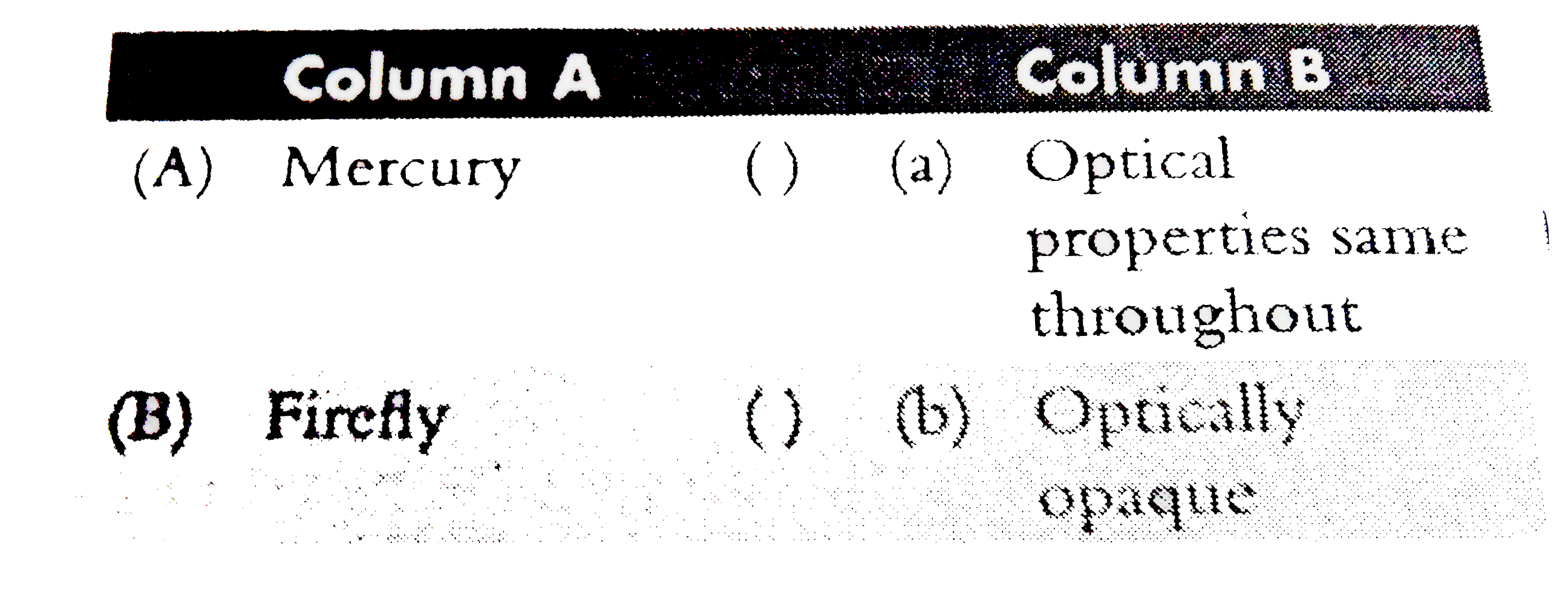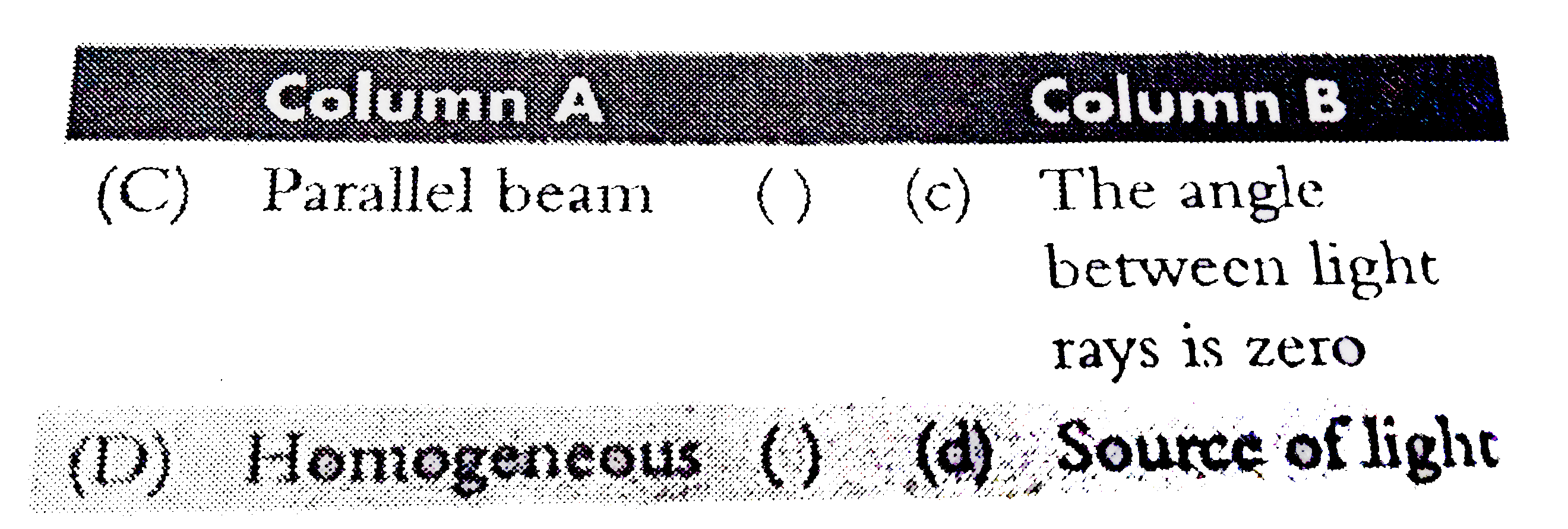Column AColumn B(A)Measuring cylinder(a)kgf, gf(B)Gavitational units of weight(b)ml of cc(C)1 g cm−3(c)Zero weight(D)Zero gravitational force(d)1000 kg m−3
The correct Answer is:A
A-b " "A measuring cylinder is used to measure the volume of liquids in millitres or cubic centimetres.
B-a " "Gravitational units of weight are kgf and gf. cm−3 , " kg " m−3
They are related are " g " cm−3 = 1000 " kg " m−3
Topper's Solved these Questions
- BOOK - PEARSON IIT JEE FOUNDATIONCHAPTER - MEASUREMENTSEXERCISE - Test 230videos
MEASUREMENTS
- BOOK - PEARSON IIT JEE FOUNDATIONCHAPTER - MEASUREMENTSEXERCISE - Very Short Answer Type Question (Fill in the Blanks)20videos
MEASUREMENTS
- BOOK - PEARSON IIT JEE FOUNDATIONCHAPTER - MEASUREMENTSEXERCISE - Level 310videos
MEASUREMENTS
- BOOK - PEARSON IIT JEE FOUNDATIONCHAPTER - MACHINES AND TOOLSEXERCISE - CONCEPT APPLICATION (LEVEL 2)12videos
MACHINES AND TOOLS
- BOOK - PEARSON IIT JEE FOUNDATIONCHAPTER - MOCK TESTEXERCISE - MULTIPLE CHOICE QUESTION25videos
MOCK TEST
Similar Questions
Match the entries in Column A with entries in Column B
Column AColumn B(A)SI unit of electric current(a)Candela(B)CGS units of time(b)Ampere(C)SI unit of luminous intensity(c)Metre(D)SI unit of distance(d)SecondView SolutionMatch the following.
Column AColumn B(A)Area/length( )(a)metre−1(B)Mass/volume( )(b)No unit(C)Length/area( )(c)metre(D)Length2/area( )(d)kg m−3View Solution
Knowledge Check
- Question 1 - Select One
Column AColumn B(A)Liquid displaced by solid(a)105g(B)1 quintal(b)109mg(c)1 tonne(c)Unit of pressure(D)kgwt m−2(d) Volume of the solid
AA→a,B→b,C→c,D→dBA→d,B→c,C→b,D→aCA→d,B→a,C→b,D→cDA→d,B→b,C→c,D→a - Question 2 - Select One
Column AColumn B(A)Liquid displaced by solid(a)105g(B)1 quintal(b)109mg(c)1 tonne(c)Unit of pressure(D)kgwt m−2(d) Volume of the solid
AA to a, B to b, C to c, D to dBAto d, B to c, C to b, D to aCA→d,B→a,C→b,D→cDA→d,B→b,C→c,D→a - Question 3 - Select One
Match the element in column A with the valency exhibited by the element given in column B
Column AColumn B(A)Neon()(a) 4(B)Oxygen()(b) 3(C)Potassium()(c) 2(D)Boron()(d) 1(E)Silicon()(d) 0AA→b, B→c, C→d, D→e, E→aBA→b, B→c, C→a, D→e, E→dCA→e, B→d, C→a, D→b, E→cDA→e, B→c, C→d, D→b, E→a
Column AColumn B(Acidic)A.Methyl orange()a.RedB.Phenolphthalein()b.YellowC.Turmeric()c.ColourlessD.Litmus()d.Blue()e.Pink
View SolutionIf net force on a system of particles is zero. Then
Column IColumn II(A)Acceleration of centre of mass(p)Constant(B)Velocity of centre of mass(q)Zero(C)Momentum of centre of mass(r)May br zero(D)Velocity of an individual particle of the system(s)May be constantView SolutionMatch the entries of Column with those of Column B

 View Solution
View SolutionColumn AColumn BA.Temperature( )a.Definition of metreB.S.I.unit( )b.Measurement of volumeC.Roman( )c.FundamentalsteelyardquantityD.ampere( )d.Derived unitE.Krypton( )e.poundF.Area( )f.kilogramG.newton( )g.Derived quantityH.Pipette( )h.Fundamental unitI.Cesium-133( )i.Measurement of massJ.FPS system( )j.Definition ofsecond
View SolutionMatch the following two columns.
Column IColumn IIA.Electrical resistance1.[ML3T−3A−2]B.Electrical potential2.[ML2T−3A−2]C.Specific resistance3.[ML2T−3A−1]D.Specific conductance4.NoneView Solution

